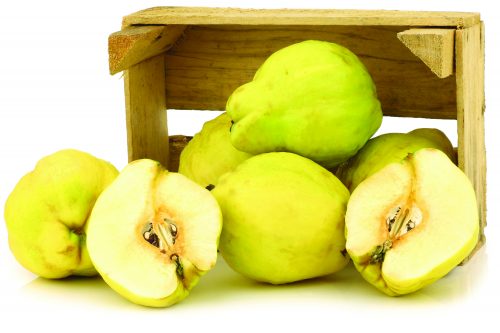
The old-fashioned hardy quince is enjoying a revival in the cuisine scene. These furry and hard-skinned oddities are inedible when raw but when lovingly cooked are just heavenly. The beauty of the quince lies in its fragrance.
Buying
Choose yellow and firm fruit. Handle gently as they bruise easily.
Storing
Store in the fridge for up to two months.
Nutrition
Like its apple and pear cousins, quince provides vitamin C and fibre.
Using
Quince flesh is creamy white, grainy and sour but with slow cooking is turned a dusky rose colour, silky and tender in texture. Because of the fruit’s high pectin content quince is most traditionally used to make jams, jellies and preserves. With the right know-how, however, there are plenty more options.
- The tanginess of quince complements lamb so add to Moroccan lamb tagines or stews.
- For extra zing to your apple or pear crumble, add thin slices of quince.
- Make a poached quince dessert by cooking washed, quartered quince in a slow cooker. Cover with a spiced (cinnamon, cloves, allspice, ginger) sugar syrup and slow cook for three hours. When cool serve with marscapone.
- Use poached quince instead of dates for a decadent sticky quince and ginger cake.
- Make quince paste. Serve the paste with pork dishes or cheese, especially blue cheese.
- Instead of sliced pear, add slices of poached quince to salads.
- Try a rocket, quince and blue cheese combination, or raw beetroot, quince and feta cheese.
Did you know? Some ancient texts suggest that the forbidden fruit eaten by Adam and Eve in the Garden of Eden was likely to have been a quince.
www.healthyfood.com










